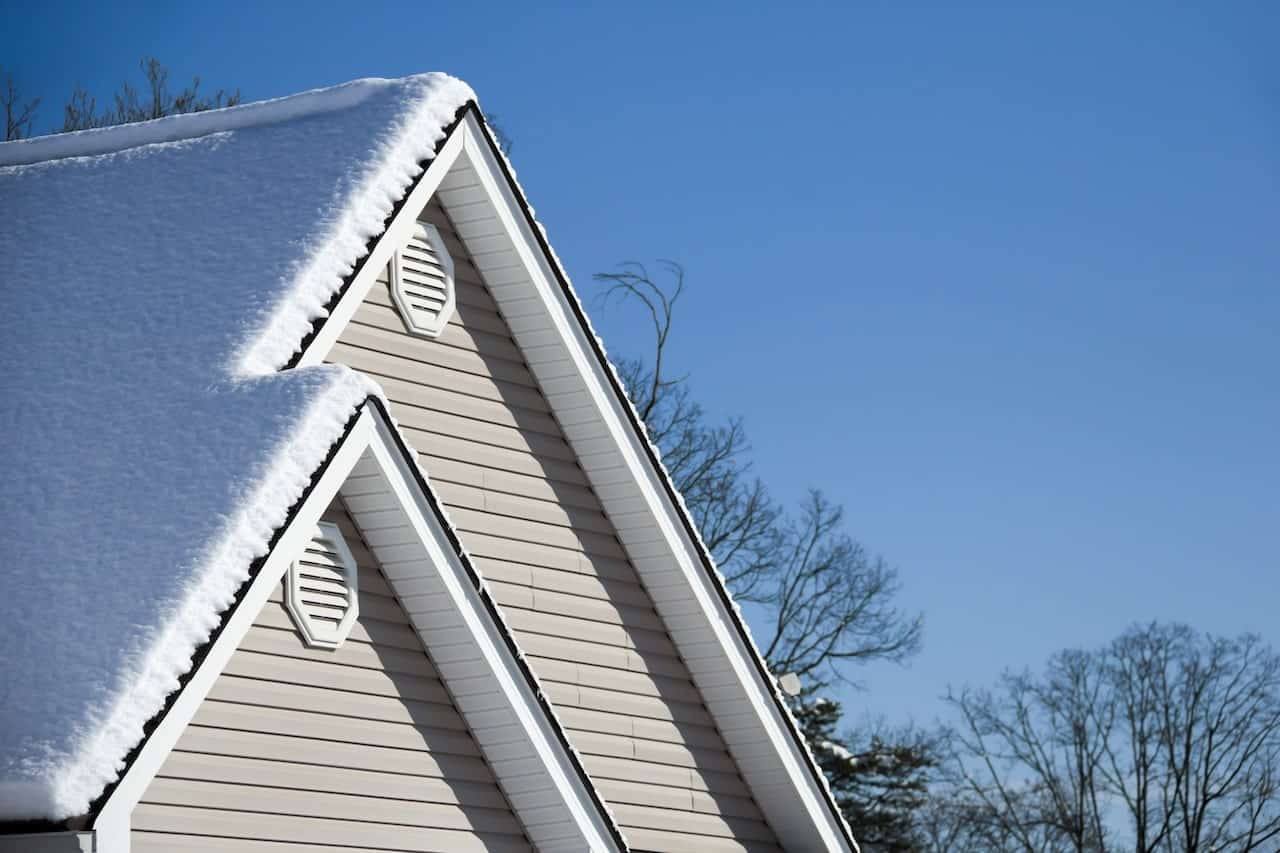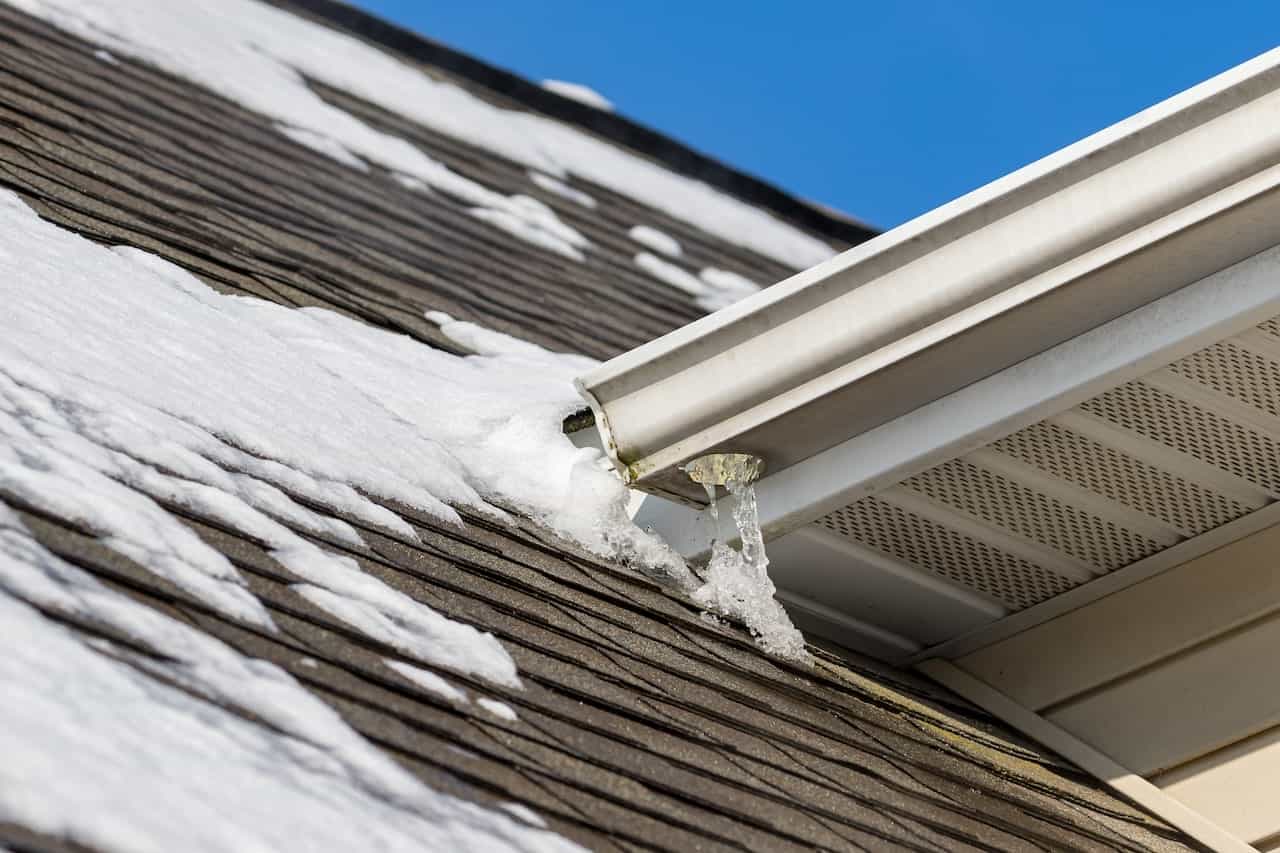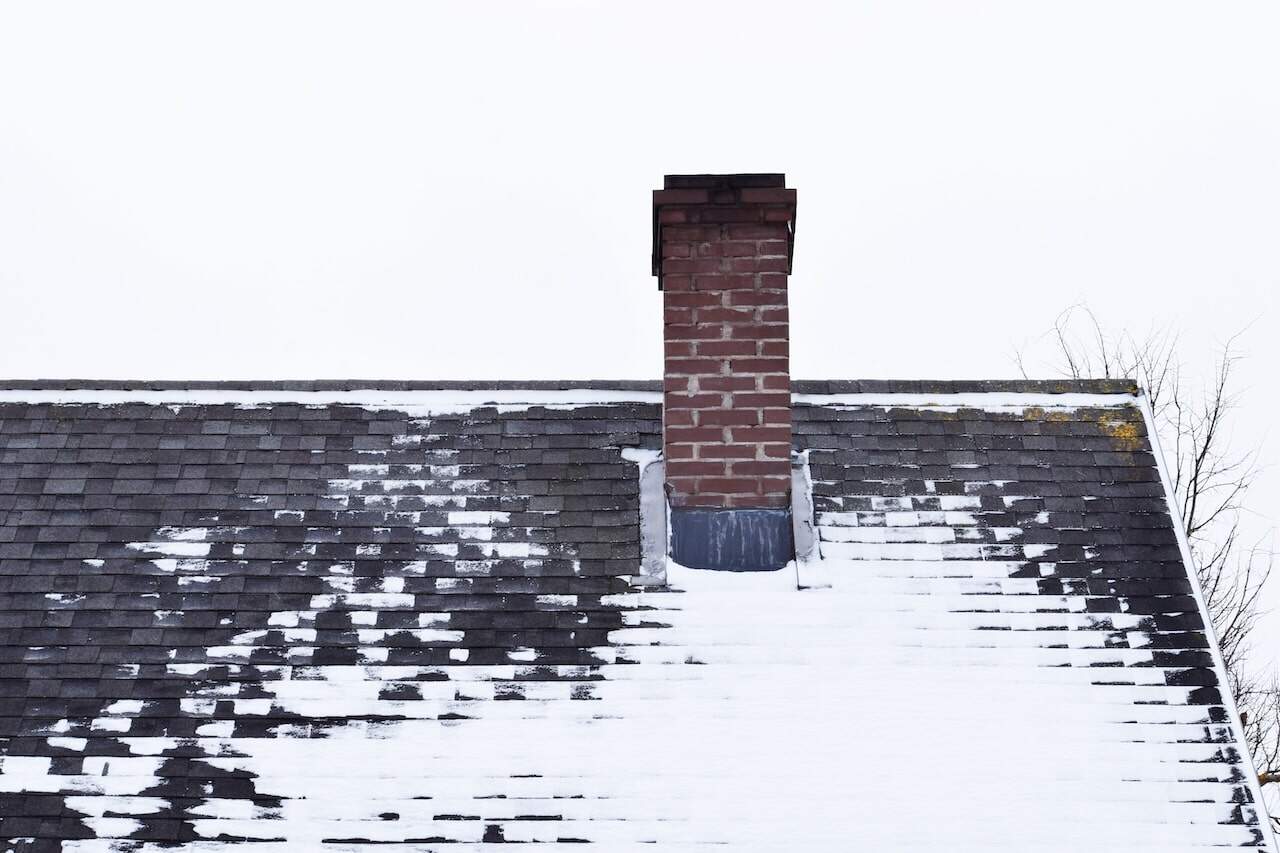Every season presents its own maintenance challenges for homeowners. Since much of that maintenance requires work outdoors, it is often done in warmer weather. But when something happens to your roof in the winter, you can’t wait until the weather gets nicer to take care of it.
Damage to your roof can lead to all kinds of problems inside your home. From water damage via leaks to mold and fungus buildup among other issues, a good roof is essential to your home’s well-being. That’s why understanding the fundamentals of winter roof maintenance is so important.
Freezing temperatures, high winds, snow and ice, and even the use of your home’s heating system can have a major effect on your roof. Proper roof care in winter can protect you from expensive repairs down the line.
So what do you need to know to keep your roof in good shape through the colder months of the year? Here are some great tips for protecting your roof in winter.
Be Prepared
The old saying goes that an ounce of preparation is worth a pound of cure—this is as true of winter roof maintenance as it is of your personal health. By taking the time to get your roof ready for winter before the weather gets frigid, you can save yourself from the cost of major repairs down the line.
There is not necessarily a specific order to these preparation actions. They all need to get done eventually before the sustained cold weather rolls in. However, you decide to take care of this business is good.
One often overlooked step is to prune tree branches that hang over your roof. In the autumn, those branches can drop a lot of leaves into your gutters, but in the winter, they can do some real damage.
If a branch gets too overloaded with snow and/or ice, it can break off and fall onto your roof. A large branch can damage shingles or even cause some underlying structural damage, but even a smaller branch can damage gutters or create a blockage that leads to an ice dam.
Speaking of gutters, a major part of roof winterization is cleaning your gutters out. Winter precipitation is heavy, and when it combines with existing debris and sludge in a gutter, that gutter can fall out of place.
Also, ice dams form because water is not able to drain away from your roof properly. Snow on the roof melts, that water refreezes in your gutter, and then further meltings have nowhere to go except under your shingles—causing all kinds of problems.
Checking on the condition of your flashing and shingles before winter starts is also one of the biggest roofing tips for winter. Your flashing is the metal that is used to direct water away from important areas on your roof—such as vents or the intersection of your roof and chimney.
Damage to shingles or flashing will result in an increased risk of water damage from snow, ice, and runoff from melting. And again, the weight of winter precipitation can take a small shingle or flashing problem and make it exponentially worse.
Taking these steps before the season changes means you will have less winter roof maintenance to worry about. But stuff can still go wrong, even with all the best prep in the world.
Be Vigilant
Once the weather gets cold and snowy, the instinct to build a little nest indoors and stay cozy and warm—ignoring the outside world—gets very strong. But it is a bad idea to ignore winter roof maintenance.
This is not to say that you need to do a full cold season roof inspection every week until spring. But you do need to be aware of what can happen so that you can take steps to resolve any issues before they become big problems.
The weight of snow can cause a lot of problems to a winter roof. Pay attention to the volume of snow that has fallen. If there are six inches or more on your roof, you’re going to want to clear it off.
You also want to pay attention to the buildup of icicles. Large, hanging icicles can be an indication of an ice dam. The weight of them can damage your gutters. And they can really hurt someone if and when they break and fall.
It’s also a wise move to check for damage to shingles from high winds. Basically, anything that can lead to moisture getting under your shingles is bad. When that moisture freezes, it expands. That pushes more shingles out of place and allows more water to get to places you don’t want it to be.
An overlooked part of roof care in winter is paying attention to your attic. You can spot places where your roof is not keeping out moisture. But you can also see if the weight of snow on your roof is causing any beams to bend.
You should also make sure to check for gaps in insulation while in your attic. Too much heat transfer from your heated home to your roof can cause the under-layer of snow to melt and refreeze—leading to a denser snow pack and the potential for ice dams from the runoff.
Be Careful
We can talk about best practices for winterizing your roof and we can talk about what to look out for, but it is so important to be cautious about how you handle your maintenance.
Winter roof maintenance brings unique risks that aren’t necessarily a problem during warmer months. The biggest danger is slipping off your roof. The less time you can spend on your roof during winter, the better.
Using roof scrapers that can be operated from the ground protects your roof from heavy snow buildup and protects you from slipping and falling from a dangerous height. But even with the use of a roof scraper, you need to be careful.
If you scrape too deeply, you can damage your shingles—which kind of defeats the purpose of working so hard to keep your roof in good shape. As long as you take care while removing snow, you will keep yourself and your roof in good condition.
You also need to be careful when taking care of any ice buildup in your gutters. If at all possible, you’ll want to take care of your gutters from a ladder, not while standing on your roof. Just be sure your ladder is secure before you climb up.
If you are removing an ice dam, be careful not to damage the gutter you are clearing out.
Basically, be sure to take care of yourself and the materials that make up your roof. If you can avoid going on your roof, you should.
Know Your Limits
The Do-It-Yourself spirit is great. A DIY homeowner can save a lot of money over time and becomes very personally invested in the home. But with winter roof maintenance, you need to know when to call in a professional.
It’s one thing to take a caulking gun with some roofing cement up to secure a loose shingle, but when the job gets bigger, you need to work with people who have the right expertise and equipment.
And if you require any sort of significant winter roof repair, you probably won’t have the tools, know-how, or safety equipment to do the job effectively and efficiently on your own. You need to know when to step back and let the pros do their jobs.
No matter how much preparation or how much winter roof maintenance you do, something can still go wrong. And if you aren’t an expert in how to solve roofing problems, you will need help. Luckily, help is out there.
Even though most roof work happens in the warmer times of the year, you can still get good service for roof repair in winter. By reaching out to a quality firm like Summit Construction Group, you can ensure that your roof problems can get taken care of as soon as possible.
 Don’t Let Winter Roof Maintenance Stress You Out
Don’t Let Winter Roof Maintenance Stress You Out
When you get right down to it, taking care of your roof through the coldest part of the year is not especially complicated. Roofing in winter can be a hassle, but it isn’t terribly complex.
If you handle the simple things—preparing for winter and watching out for problems—the big things won’t take you by surprise. You will be able to spot them early and address them before they have a chance to do major damage to your home.
Winter roof maintenance is incredibly important for homeowners. Damage from water getting under your shingles or mold growth around the moisture that your roof has allowed into your home can be big problems.
But by taking a few simple steps to take care of your roof, those problems are less likely to affect you. And if you aren’t sure how to address an issue that does arise, our team at Summit Construction is here to help.



